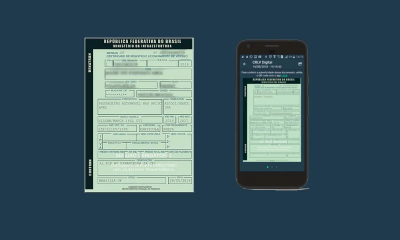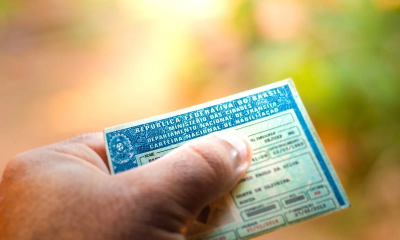Conversion of Combustion Motorcycles to Electric: A Practical Guide
As the world continues to focus on sustainability, more and more individuals are looking for ways to reduce their carbon footprint. One area that is receiving a lot of attention is the transportation sector, particularly motorcycles. While electric motorcycles are gaining popularity, the cost of purchasing a new one can be prohibitive. However, converting a combustion motorcycle to electric is a practical and cost-effective option.

Electric motorcycle conversion involves replacing the combustion engine with an electric motor and battery system. This not only reduces emissions but also provides a smoother and quieter ride. In addition, electric motorcycles have lower maintenance costs and are more energy-efficient than their combustion counterparts.
This practical guide will take readers through the process of converting a combustion motorcycle to electric. It will cover the necessary components, tools required, and step-by-step instructions. By the end of this guide, readers will have the knowledge and confidence to convert their own motorcycle to electric, contributing to a more sustainable future.
Understanding Electric Motorcycle Conversions
Basics of Electric Motorcycles
Electric motorcycles are vehicles that use electric motors instead of combustion engines to power the bike. They are becoming increasingly popular due to their environmentally-friendly nature and lower operating costs. Electric motorcycles are powered by a battery that stores electricity, which is then used to power the motor. The motor then turns the wheels of the motorcycle.
Benefits of Converting to Electric
There are several benefits to converting a combustion motorcycle to an electric motorcycle. Firstly, electric motorcycles are much more environmentally-friendly than combustion motorcycles. They produce zero emissions, which means they do not contribute to air pollution. Secondly, electric motorcycles are much cheaper to operate than combustion motorcycles. They require less maintenance, and the cost of electricity is much lower than the cost of gasoline. Finally, electric motorcycles are much quieter than combustion motorcycles, which makes them more pleasant to ride.
Electric Conversion Components
Converting a combustion motorcycle to an electric motorcycle requires several components. The most important component is the electric motor, which replaces the combustion engine. The motor is powered by a battery, which stores electricity. The battery is connected to a controller, which regulates the flow of electricity to the motor. The controller is connected to a throttle, which is used to control the speed of the motorcycle. Finally, the battery is connected to a charger, which is used to recharge the battery.
Overall, converting a combustion motorcycle to an electric motorcycle can be a great way to reduce your environmental impact and save money on operating costs. While the initial cost of conversion can be high, the long-term benefits make it a worthwhile investment for many riders.
The Conversion Process
Converting a combustion motorcycle to an electric one requires careful planning and execution. Here are the steps involved in the conversion process:
Choosing the Right Motorcycle
The first step in the conversion process is to choose the right motorcycle for the job. The motorcycle should be lightweight, with a frame that can accommodate the electric motor and battery. It should also have a simple wiring system, which will make the conversion process easier.
Disassembling the Combustion Engine
Once the motorcycle has been selected, the combustion engine must be removed. This involves disconnecting the fuel lines, exhaust system, and wiring harness. The transmission and clutch also need to be removed.
Installing the Electric Motor and Controller
The electric motor and controller are the heart of the electric motorcycle. The motor should be chosen based on the torque and power requirements of the motorcycle. The motor controller should be compatible with the motor and should be able to regulate the speed and torque of the motor.
Electrical Wiring and Safety Measures
The electrical wiring is a crucial part of the conversion process. The wiring should be done in a neat and organized manner to avoid any short circuits or electrical fires. Fuses should be installed to protect the system from overloading. A throttle should also be installed to control the speed of the motorcycle.
Battery Installation and Management
The battery is the most important component of the electric motorcycle. The battery capacity should be chosen based on the range requirements of the motorcycle. The battery should be installed in a secure and ventilated compartment. A DC/DC converter should also be installed to regulate the voltage of the battery.
Overall, converting a combustion motorcycle to an electric one requires careful planning and execution. By following these steps, one can successfully convert a motorcycle to an electric one and enjoy the benefits of electric transportation.
Performance, Maintenance, and Legal Considerations
Maximizing Performance and Range
One of the primary concerns for those converting combustion motorcycles to electric is maintaining or improving performance and range. The electric motor’s torque can provide better acceleration than a combustion engine, but it is essential to balance this with battery capacity and weight. Upgrading the battery pack and optimizing its placement can improve range, while reducing weight can improve overall performance.
Sprockets also play a crucial role in maximizing performance and range. A higher sprocket ratio can improve top speed, but it can also reduce torque and acceleration. A lower sprocket ratio can provide better acceleration and torque, but it can reduce top speed and range. Finding the right balance between these factors is essential to achieve optimal performance and range.
Routine Maintenance and Troubleshooting
Routine maintenance for an electric motorcycle is generally less demanding than for a combustion engine. Electric motors have fewer moving parts, reducing the need for regular maintenance. However, it is crucial to keep the battery pack and charging system in good condition. Regularly checking the battery’s health and charging performance can prevent unexpected breakdowns and extend the battery’s lifespan.
Troubleshooting an electric motorcycle can be more challenging than for a combustion engine, as the electrical system is more complex. However, many issues can be diagnosed with diagnostic software, which can provide detailed information on the bike’s performance and status. It is also essential to have a basic understanding of electrical systems and components to diagnose and fix any issues that arise.
Regulatory Compliance and Insurance
Converting a combustion motorcycle to electric can have legal implications, depending on the jurisdiction. It is essential to research and comply with any applicable government policies, such as safety standards, emissions regulations, and registration requirements. Failing to comply with these regulations can result in fines or legal action.
Insurance is also a crucial consideration for electric motorcycles. Many insurance providers offer coverage for electric motorcycles, but the premiums may be higher than for combustion engines. It is essential to shop around for insurance providers that offer coverage for electric motorcycles and compare premiums and coverage options.
In conclusion, converting a combustion motorcycle to electric can provide many benefits, such as reducing air pollution, improving performance and range, and reducing fuel consumption. However, it is essential to consider the viability of the conversion, including the payback period and carbon emissions. By considering performance, maintenance, and legal considerations, individuals can make informed decisions about converting their motorcycles to electric.
Frequently Asked Questions
What components are needed for converting a combustion motorcycle to electric?
Converting a combustion motorcycle to electric requires several key components, including an electric motor, a battery pack, a motor controller, a charger, and various other components such as wiring, fuses, and switches. The specific components needed will depend on the make and model of the motorcycle being converted and the desired performance characteristics of the electric conversion.
Can you recommend a high-quality electric motorcycle conversion kit?
There are several high-quality electric motorcycle conversion kits available on the market, such as the Motenergy ME1115 Brushless DC Motor and the Alltrax AXE4844 Motor Controller. However, it is important to note that not all conversion kits are suitable for all motorcycles, and careful consideration should be given to the compatibility of the kit with the specific make and model of the motorcycle being converted.
What are the legal considerations when converting a motorcycle to electric in the U.S.?
The legal considerations when converting a motorcycle to electric in the U.S. can vary depending on the state and local laws. In general, it is important to ensure that the electric conversion meets all relevant safety standards and regulations, such as those set by the National Highway Traffic Safety Administration (NHTSA) and the Environmental Protection Agency (EPA). Additionally, it may be necessary to obtain a special registration or license plate for the converted motorcycle.
How can I estimate the total cost for an electric motorcycle conversion?
The total cost of an electric motorcycle conversion can vary widely depending on the specific components used and the complexity of the conversion process. Generally, a complete conversion kit can cost anywhere from $3,000 to $10,000, with additional costs for labor and any necessary modifications to the motorcycle. It is important to carefully research and budget for all necessary components and services before beginning a conversion project.
What steps are involved in the DIY conversion of a motorcycle to electric power?
The DIY conversion of a motorcycle to electric power typically involves several key steps, including removing the combustion engine and related components, installing the electric motor and controller, mounting the battery pack, and connecting all necessary wiring and components. It is important to carefully research and plan each step of the conversion process before beginning, and to ensure that all safety standards and regulations are met.
How do I determine the appropriate size of electric motor for my motorcycle conversion?
The appropriate size of electric motor for a motorcycle conversion depends on several factors, including the weight and size of the motorcycle, the desired top speed and acceleration, and the available battery capacity. It is important to carefully consider all of these factors and to consult with experts in electric motorcycle conversions before selecting a motor and controller for the conversion project.
-

 Trânsito1 year ago
Trânsito1 year agoMudança ou Adição de Categoria da CNH: Como Fazer e Quais os Requisitos
-

 Trânsito1 year ago
Trânsito1 year agoCadastro de Instrutor de Trânsito: Como Fazer a Inscrição ou Renovação
-

 Trânsito1 year ago
Trânsito1 year agoCNH Digital: Como Funciona e Quais os Benefícios para os Motoristas
-

 Trânsito1 year ago
Trânsito1 year agoCertidão de Prontuário: Tudo sobre a Documentação do Condutor
-

 Trânsito1 year ago
Trânsito1 year agoAlteração de Dados Cadastrais: Como Atualizar as Informações do Veículo ou do Condutor
-

 Trânsito1 year ago
Trânsito1 year agoPerda ou Roubo da CNH: Como Solicitar a 2ª Via pelo Site do DETRAN
-

 Trânsito1 year ago
Trânsito1 year agoTransferência de Veículo: Como Fazer o Registro em Outro Estado ou Município
-

 Trânsito1 year ago
Trânsito1 year agoCRLV Eletrônico: A Nova Era da Documentação Veicular
